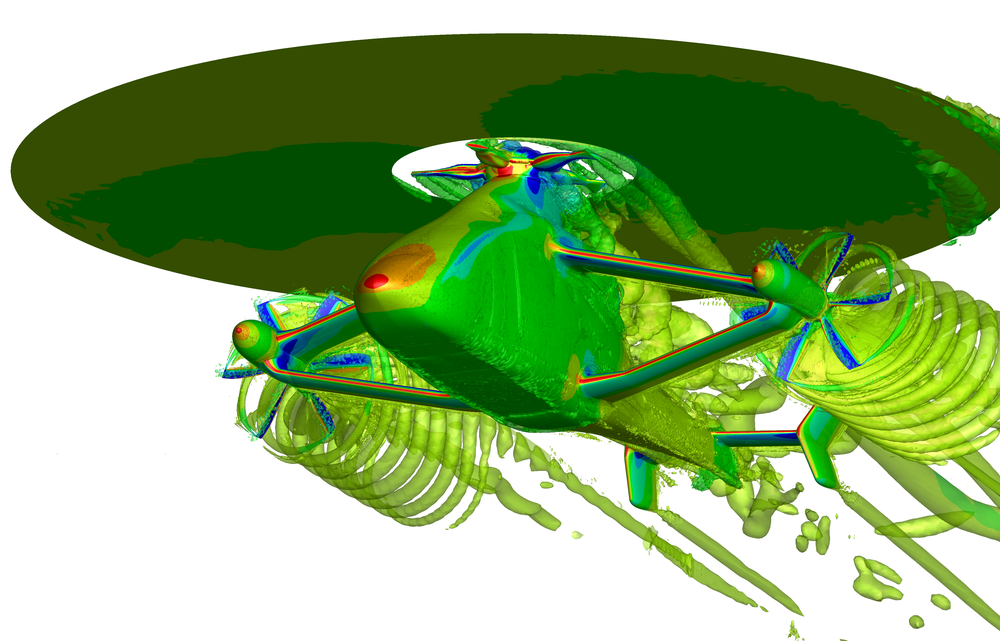Helicopters Department

Innovative helicopter concepts - from numerical calculations to wind tunnel experiments and flight tests
In the department Helicopters we are researching the aerodynamics and noise emission of helicopters as well as air taxis and are developing technologies for high-performing but quiet future rotorcraft. For this purpose, we use wind tunnel experiments, flight tests and numerical calculations.
Competencies
Helicopters are very versatile: They can fly in any direction the pilot wishes and can also hover in the air. This characteristic makes the aerodynamic design of a helicopter very demanding, since the helicopter must always fly safely, fuel-efficiently and with low vibration. Furthermore the helicopter should be as quiet as possible. These requirements become even more stringent for the rapidly developing urban transport of people and goods by drones or air taxis (Urban Air Mobility). With fundamental research our scientists are carrying out to investigate the flow physics of helicopters, such as boundary layers and flow separations, interaction aerodynamics or the generation of sound. We develop powerful simulation methods, such as panel or CFD methods, for the computer-aided prediction of the flow around the helicopter and its noise emission. The knowledge gained is applied to optimize the shape of rotor blades, for example, or to predict the flight performance of new types of rotorcraft. Building on the expertise gained for helicopters, we are involved in the prediction of the noise emissions of air traffic (including aircraft).
Main research topics
- Research for flow physics and noise emission
- Development of measurement techniques for wind-tunnel experiments and flight tests
- Development of computational methods for the prediction of aerodynamics and noise emission
- Aerodynamic and aeroacoustic design of helicopters and development of innovative technologies
- Prediction of aircraft noise emission and imission
